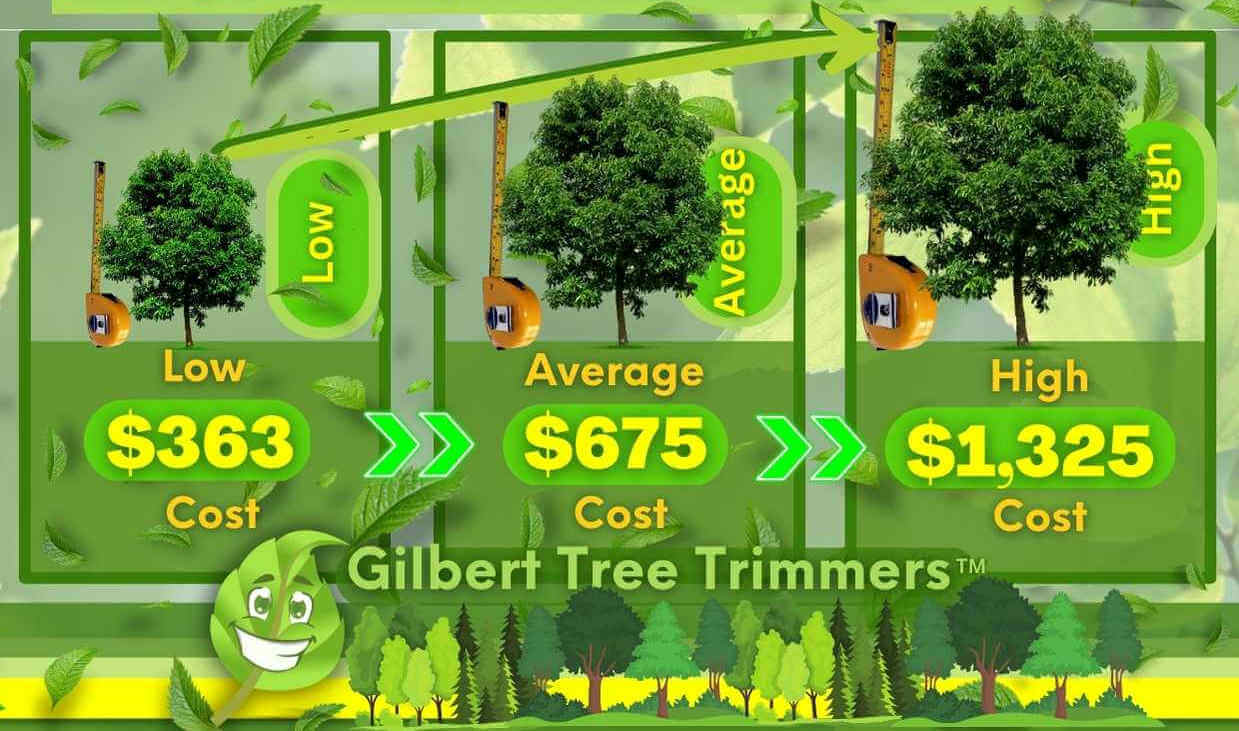Featured
Table of Contents
- – Most Affordable Arborist In Fair Oaks, VA
- – Fair Oaks, VA Stump Removal Service Rate Sheet
- – Fair Oaks, VA Stump Grinding: Real Testimonials
- – New Customer Tree Clearing Discounts In Fair ...
- – Fair Oaks, VA Tree Trimming Service Rate Sheet
- – Fair Oaks, VA Stump Removal: What Affects The...
- – Fair Oaks, VA Stump Removal Payment Terms
- – Green Tree Cutting Costs In Fair Oaks, VA
- – Fair Oaks, VA Tree Trimming Cost Factors
- – Fair Arborist Pricing In Fair Oaks, VA
- – Honest Fair Oaks, VA Tree Removal Reviews
- – Top Stump Grinding Reviews In Fair Oaks, VA
- – Get Instant Tree Clearing Estimates In Fair ...
- – Average Tree Clearing Costs In Fair Oaks, VA
- – Fair Oaks, VA Tree Trimming Package Prices

The subsections listed below offer more comprehensive details about rates, consisting of a typical variety for each. TypeAverage Removal CostPineConiferPalmMagnoliaArborvitaeAshCedarSweet GumEucalyptusSycamoreCypressOakMaplePoplar You can anticipate to pay in between to remove a pine, depending upon its size. Eliminating a pine is one of the more budget friendly jobs unless it is one that has been around for several years and is quite big.
Most Affordable Arborist In Fair Oaks, VA
Pines likewise have a tap root that grows deep into the soil, which can show to be more tough to get rid of. The procedure itself involves a professional cutting the tree, clearing the base, cutting the surface area roots, getting rid of the stump, and lastly treating the soil. Without a professional hand, you risk leaving pine seedlings behind, which will fall from the roots of distressed pines.
Fair Oaks, VA Stump Removal Service Rate Sheet
The U.S. national average for conifer elimination is around to have the conifer lowered, hauled away, and the stump ground or gotten rid of totally. Conifers are normally simpler to eliminate, and despite the fact that they can grow quite tall, they do not cost a fortune to get rid of. Conifers consist of pine, spruce, fir, and juniper trees.
Fair Oaks, VA Stump Grinding: Real Testimonials
While conifers are beautiful, they kill native plants and particular types of yard (tree removal). The typical cost of palm elimination depends on the height as much as the type, ranging from.
New Customer Tree Clearing Discounts In Fair Oaks, VA
That is why it is necessary to understand which type you are removing. While you do not need an herbicide to eliminate a palm tree, there are some actions your elimination professional will need to take to ensure the task is done properly. There are 2 ways they can get rid of them: by chopping them down or digging them up.
Fair Oaks, VA Tree Trimming Service Rate Sheet
From there, they get rid of the actual tree and then the stump. Anticipate to pay in between to remove this type of tree, depending on the exact size and information of the job.
Fair Oaks, VA Stump Removal: What Affects The Price
There are three types: green, white, and black ash. White ash is known for its many colors. With its gray-tinged bark, its leaves are green or purple in the spring and golden yellow or purplish-red in the fall. They delight in moderate climates and great deals of sun. The green ash is called such due to its green or yellow foliage.
Fair Oaks, VA Stump Removal Payment Terms

The bark is softer, and it flowers later on in the year - arborist. Due to the variation in height, the removal cost difference is wide from. A coniferous, evergreen tree, the cedar is a hardy types. Real cedars enjoy greater altitudes, generally in the Himalayas and the Mediterranean. A true cedar can grow as high as 160 feet in height and is frequently planted in the United States as a landscape option.
Green Tree Cutting Costs In Fair Oaks, VA
The growth of incorrect cedars varies from 50 feet up to 230 feet high. Homeowners might pay anywhere from, depending upon the roots. With star-shaped leaves and sensational fall colors, the sweet gum is considered a medium to big tree. Delighting in full sun, the sweet gum can not tolerate pollution.
Fair Oaks, VA Tree Trimming Cost Factors
Normally, it costs between to get rid of a eucalyptus. Eucalyptus are not common all over, but they are quite big compared to others, which is why even the smaller ones are so costly to eliminate.
Fair Arborist Pricing In Fair Oaks, VA
There are a handful of ways to do this, including burning, pulling, grinding, or eliminating them with herbicide. Expect to pay between to remove sycamores, based upon the height, trunk size, and quantity of work involved. Sycamores are one of the biggest wood trees, typically ranging from 60 to 100 feet tall and as wide as 15 feet.
Honest Fair Oaks, VA Tree Removal Reviews
The first two steps will expose the withins of the tree and cut off the circulation of nutrients up the trunk. From there, an expert applies herbicide to kill the tree and reduce the trunk. They will eliminate the stump. Otherwise, brand-new sprouts may grow from it. Reducing and removing a full-grown cypress could cost as much as.
Top Stump Grinding Reviews In Fair Oaks, VA
There are numerous different kinds of Cypress trees, but the most widespread are the Leyland, Arizona, Bald, and Italian. The Bald Cypress grows in swampy or extremely damp areas while the others take pleasure in a dry, warm, or hot environment (tree clearing). They can grow as high as 80 to 100 feet tall
Get Instant Tree Clearing Estimates In Fair Oaks, VA

Prone to illness, the Cypress is one of the most treasured woods for furnishings. The average oak grows to around 60 feet, and depending on the intricacy of the removal, it costs approximately to remove. The specific size of your oak and the effort needed to fell it impact what you will actually pay for removal in addition to any extra services like stump grinding.
Average Tree Clearing Costs In Fair Oaks, VA
Access to the trees and the roots will likewise impact the total expense. Maples are normally among the more costly trees to eliminate due to the fact that of their size and the work included in the elimination.
Fair Oaks, VA Tree Trimming Package Prices
Growing as high as 90 to 115 feet, these huge lumbers are mainly discovered in North America and include the aspen, cottonwood, and balsam trees. The process to eliminate trees includes all the cutting and cutting of the branches and trunk, bringing it down to a stump.
Table of Contents
- – Most Affordable Arborist In Fair Oaks, VA
- – Fair Oaks, VA Stump Removal Service Rate Sheet
- – Fair Oaks, VA Stump Grinding: Real Testimonials
- – New Customer Tree Clearing Discounts In Fair ...
- – Fair Oaks, VA Tree Trimming Service Rate Sheet
- – Fair Oaks, VA Stump Removal: What Affects The...
- – Fair Oaks, VA Stump Removal Payment Terms
- – Green Tree Cutting Costs In Fair Oaks, VA
- – Fair Oaks, VA Tree Trimming Cost Factors
- – Fair Arborist Pricing In Fair Oaks, VA
- – Honest Fair Oaks, VA Tree Removal Reviews
- – Top Stump Grinding Reviews In Fair Oaks, VA
- – Get Instant Tree Clearing Estimates In Fair ...
- – Average Tree Clearing Costs In Fair Oaks, VA
- – Fair Oaks, VA Tree Trimming Package Prices
Latest Posts
Understanding Tree Service Costs In Silver Lake, NC
Maintenance Tree Cutting Costs In Ferry Pass, FL
Fast Stump Removal Service Costs In Rio Vista, CA
More
Latest Posts
Understanding Tree Service Costs In Silver Lake, NC
Maintenance Tree Cutting Costs In Ferry Pass, FL
Fast Stump Removal Service Costs In Rio Vista, CA